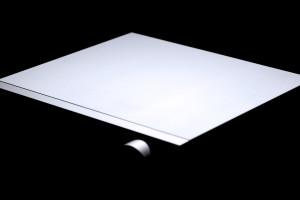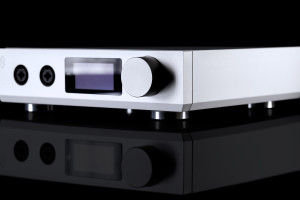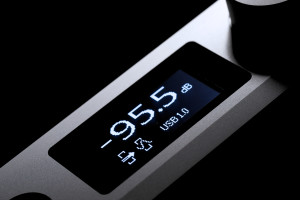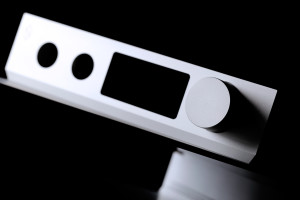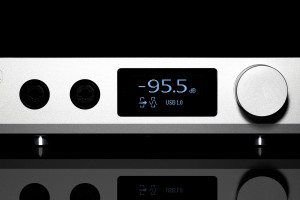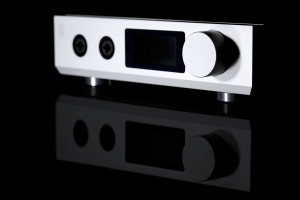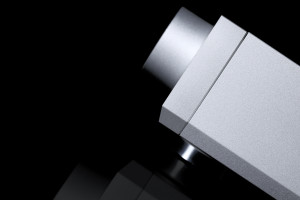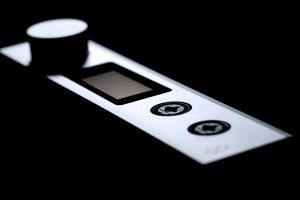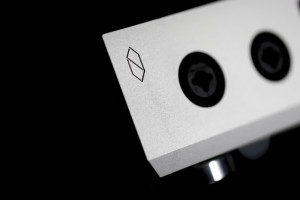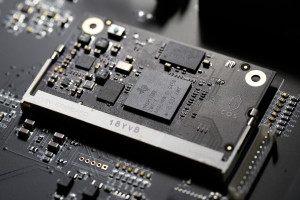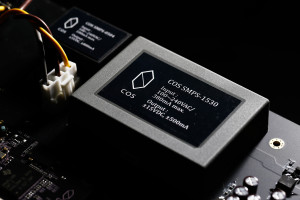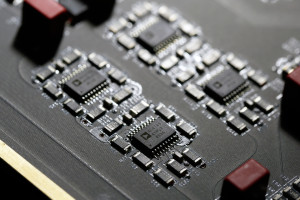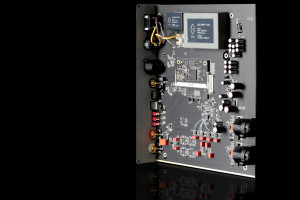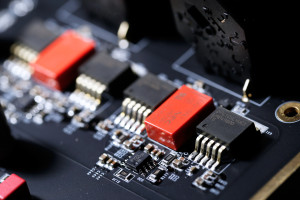COS Engineering company scored a very nice start with its D1 DAC/preamp combo in 2014. Said device was and still is rather pricey, though of great quality on many levels, therefore surely worth the attention of many audio enthusiasts out there. Next portfolio additions were expected shortly after, yet things got suspiciously quiet in Taiwanese camp, at least until recently. It finally turned out that second product – H1 – is quite affordable and desktop oriented preamplifier/DAC combo with a headphone twist. Enjoy.
Introduction
COS Engineering D1 is an amazing product. It really is. Why? Because it does everything right, nothing wrong, looks and feels great and it has a very distinctive character above all else. By that last feature one should understand that exceptionally grainless and mature performance is on the table, additionally sweetened by marvelous build quality. D1 model turned out to be very versatile soundwise, it simply blended perfectly into every audio environment yours truly prepared for it. Our Taiwanese deck behaved differently than LampizatOr Level7 I had back then, the same story was against my friend’s Reimyo DAP-999EX. On top of that, said product handled volume control duties like a champ. In the end, this review’s takeaway was that it should be treated as two equal devices fitted in one very fancy box. To summarize, D1’s steep €9’000 asking can be easily justified by individuals who are after a grand d/a performer and a preamplifier combo, which actually looks like a huge pile of money. Case closed, let’s move on then. Past D1 premiere, the obvious question was about its company’s next step. Or any at all. It’s perfectly understandable. When the very first product of a completely unknown manufacturer turns out to be great or exceptional, curiosity happens. Demanding journalistic crowd wants more and more. Yes, in a friendly way. But that’s the burden skilled engineers, PR people and their CEO-s have to carry nonetheless. It took COS Engineering a while to deliver. Nearly two years. That’s a lot of time in the audio business. Helluva lot. Why so? Is it merely because of the urge to concoct exceptionally polished product? Hence “no need to rush” attitude was the case? No, the truth turned out to be much more complicated than this rather easygoing scenario. But before we’ll get to that part, some forecasting is in order.
Past D1 premiere, the obvious question was about its company’s next step. Or any at all. It’s perfectly understandable. When the very first product of a completely unknown manufacturer turns out to be great or exceptional, curiosity happens. Demanding journalistic crowd wants more and more. Yes, in a friendly way. But that’s the burden skilled engineers, PR people and their CEO-s have to carry nonetheless. It took COS Engineering a while to deliver. Nearly two years. That’s a lot of time in the audio business. Helluva lot. Why so? Is it merely because of the urge to concoct exceptionally polished product? Hence “no need to rush” attitude was the case? No, the truth turned out to be much more complicated than this rather easygoing scenario. But before we’ll get to that part, some forecasting is in order. After D1 hit the market, for individuals like me it was rather obvious that the next step ought to be a complementary device, i.e. a power amplifier, a pair of monos even, or a digital transport loaded with some network shenanigans so hot these days. It’s reasonable to think that everything that matches D1’s visual appearance, price tag and companionship needs, simply makes the picture more complete. But that’s not the only correct route out there. A manufacturer can struggle to sell one very expensive product, or much easier part with several affordable items. As a bonus, option number two usually tends to build brand recognition much faster as more people are able to financially allow themselves to check what’s what. The word about newfound discovery of affordable calibre is easily spread in the process, that’s the major upshot. And since COS Engineering isn’t worldwide known company still, from marketing perspective it makes sense to deliver a device of H1 sort and therefore kill two birds with just one stone. Once said manufacturer is widely present on the audio roadmap, then it’ll be the right time to deliver proper, therefore obviously expensive D1’s company. Subjectively, I can’t think of a better way to do so than head-fi oriented and sub €3’000 quality desktop deck introduction. That’s my take on this Taiwanese case, YMMV.
After D1 hit the market, for individuals like me it was rather obvious that the next step ought to be a complementary device, i.e. a power amplifier, a pair of monos even, or a digital transport loaded with some network shenanigans so hot these days. It’s reasonable to think that everything that matches D1’s visual appearance, price tag and companionship needs, simply makes the picture more complete. But that’s not the only correct route out there. A manufacturer can struggle to sell one very expensive product, or much easier part with several affordable items. As a bonus, option number two usually tends to build brand recognition much faster as more people are able to financially allow themselves to check what’s what. The word about newfound discovery of affordable calibre is easily spread in the process, that’s the major upshot. And since COS Engineering isn’t worldwide known company still, from marketing perspective it makes sense to deliver a device of H1 sort and therefore kill two birds with just one stone. Once said manufacturer is widely present on the audio roadmap, then it’ll be the right time to deliver proper, therefore obviously expensive D1’s company. Subjectively, I can’t think of a better way to do so than head-fi oriented and sub €3’000 quality desktop deck introduction. That’s my take on this Taiwanese case, YMMV.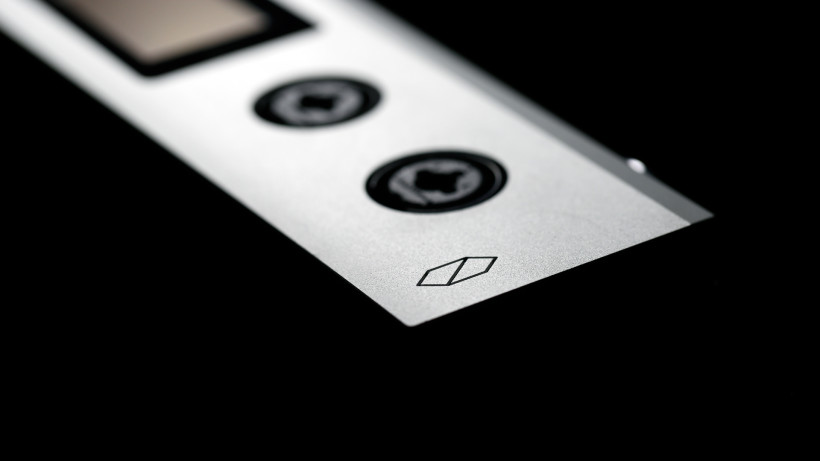 H1 model was on the drawing board very early on. The decision to go this particular, head-fi oriented road wasn’t made in the last minute. So what was the real reason behind said device’s arrival later than expected? In short, COS Engineering staff is very strict about casework quality, which is undoubtedly seen in this company’s products. Marketing responsible Maggie Chern told me that finished chassis’ dimensions were constantly off. Not happy about how the first subcontractor handled it, the management decided to look for another one, which delivered even worse parts. Then the decision was made to give the former one more chance. In the end it finally worked, but Maggie wrote that the whole process was a tiresome and long struggle. The real issue with CNC responsible vendors was their inability to stick to sub millimetre tolerances so badly needed. Srajan Ebaen in his H1 review discussed this matter extensively, so I encourage you to check his material as well. Fortunately, said story has a happy ending, H1 model ready for journalistic torture is here, therefore let’s focus on that.
H1 model was on the drawing board very early on. The decision to go this particular, head-fi oriented road wasn’t made in the last minute. So what was the real reason behind said device’s arrival later than expected? In short, COS Engineering staff is very strict about casework quality, which is undoubtedly seen in this company’s products. Marketing responsible Maggie Chern told me that finished chassis’ dimensions were constantly off. Not happy about how the first subcontractor handled it, the management decided to look for another one, which delivered even worse parts. Then the decision was made to give the former one more chance. In the end it finally worked, but Maggie wrote that the whole process was a tiresome and long struggle. The real issue with CNC responsible vendors was their inability to stick to sub millimetre tolerances so badly needed. Srajan Ebaen in his H1 review discussed this matter extensively, so I encourage you to check his material as well. Fortunately, said story has a happy ending, H1 model ready for journalistic torture is here, therefore let’s focus on that.
Build
The decision to go with H1 makes sense not only from financial and recognition standpoints. Its quite affordable price tag is one thing whereas head-fi roots is the other, an very important at that. Headphones are constantly popular and it’s smart to have a functionality that resonates with these. There isn’t any more universal and convenient link to this group of products than a device that needs only a pair of cans and a PC based transport to make a rig as viable as it gets. Being a DAC, preamplifier and a headphone amplifier combo, H1 fits this description perfectly. Function wise it covers every field. In comparison to rather big D1, H1 is very small. It measures (W x D x H) 260 x 250 x 60 mm. Add mere 3.5 kg weigh and boom, a perfectly desktop friendly one-box headphone solution is the upshot. The manufacturer’s brochure states that H1 headphone out’s THD+N is <0.0001% (-100 dB), frequency response is 20 Hz to 20 kHz (+0 dB, -0.5 dB), SNR sits below 110 dB, full scale output is 6/12 Vrms in unbalanced and balanced mode respectively and loads of 16 ohms or more are welcomed. Via USB 1.0 protocol, H1 can handle up to 24 bit/96 kHz, whereas USB 2.0 ups the ante to respectable 24 bit/384 kHz and DSD124 handled via DoP. Taiwanese unit’s 2 Vrms line-out is described by the same FR and THD+N figures as its headphone out. This machine isn’t power hungry, in standby it needs 0.5W whereas during normal operation it takes less than 20W, which is 2.5x times less than D1.
In comparison to rather big D1, H1 is very small. It measures (W x D x H) 260 x 250 x 60 mm. Add mere 3.5 kg weigh and boom, a perfectly desktop friendly one-box headphone solution is the upshot. The manufacturer’s brochure states that H1 headphone out’s THD+N is <0.0001% (-100 dB), frequency response is 20 Hz to 20 kHz (+0 dB, -0.5 dB), SNR sits below 110 dB, full scale output is 6/12 Vrms in unbalanced and balanced mode respectively and loads of 16 ohms or more are welcomed. Via USB 1.0 protocol, H1 can handle up to 24 bit/96 kHz, whereas USB 2.0 ups the ante to respectable 24 bit/384 kHz and DSD124 handled via DoP. Taiwanese unit’s 2 Vrms line-out is described by the same FR and THD+N figures as its headphone out. This machine isn’t power hungry, in standby it needs 0.5W whereas during normal operation it takes less than 20W, which is 2.5x times less than D1.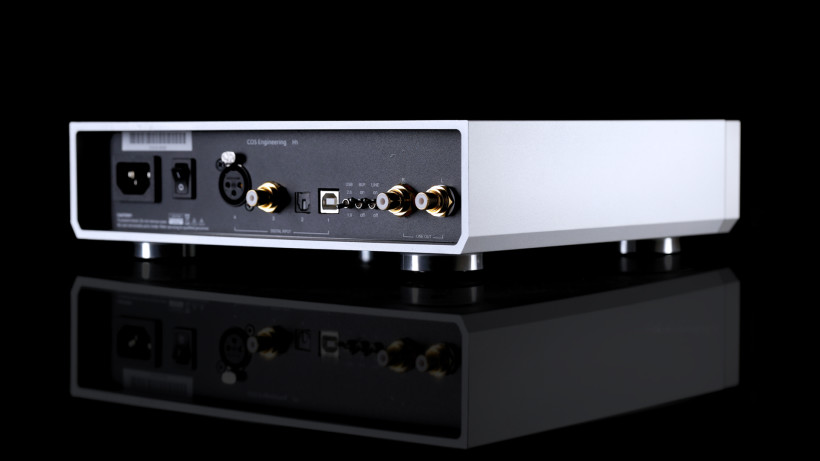 Let’s take at H1’s casework. It’s flawless and very meticulously assembled. D1 model already showed what COS Engineering team strives for in that regard, yet the same quality is seen in said company’s latest, times less costly addition. It’s very good that dedication this heavy is visible in a product four times more affordable. H1 visually resembles D1, that’s easily seen. Trimmed lower edges is something both models share, which makes them aesthetically very appealing. Said subtle addition aside, there aren’t any other and I believe that this is what makes our desktop integrated not overly complex but a very clean looker. This wouldn’t have been the case if it wasn’t for perfectly matched chassis parts. We have already established that our Taiwanese team has really high standards in this regard in particular. But after H1 closer examination, it’s safe to say that no empty talk on COS Engineering rep’s side had place. At least that’s what yours truly chose to believe after connecting every dot out there.
Let’s take at H1’s casework. It’s flawless and very meticulously assembled. D1 model already showed what COS Engineering team strives for in that regard, yet the same quality is seen in said company’s latest, times less costly addition. It’s very good that dedication this heavy is visible in a product four times more affordable. H1 visually resembles D1, that’s easily seen. Trimmed lower edges is something both models share, which makes them aesthetically very appealing. Said subtle addition aside, there aren’t any other and I believe that this is what makes our desktop integrated not overly complex but a very clean looker. This wouldn’t have been the case if it wasn’t for perfectly matched chassis parts. We have already established that our Taiwanese team has really high standards in this regard in particular. But after H1 closer examination, it’s safe to say that no empty talk on COS Engineering rep’s side had place. At least that’s what yours truly chose to believe after connecting every dot out there.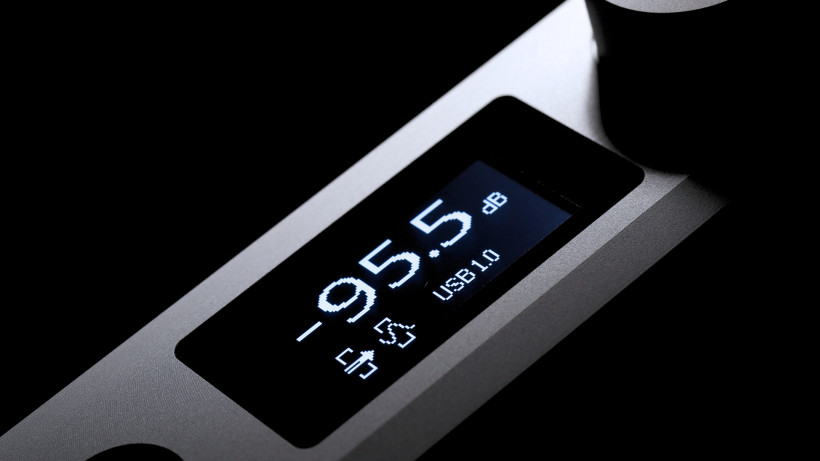 COS Engineering H1 front sports two combined 6.3 mm/3-pin XLR sockets by Neutrik. One can use two pairs of headphones finished in single-ended fashion or one balanced. 4-pin XLR’s got very popular, twice the amount of 3-pin ones is a rare, yet still present view. Subjectively I’m perfectly fine with both solutions, Neutrik’s combo socketry is convenient, but you be the judge. Moving on, H1 got a nice 128 x 64 px. OLED screen, which serves white digits on a perfectly black background. Fairly limited resolution makes these a bit vintage alike. The display shows volume level, which goes from 96 to 0 dB in 192 steps, each of 0.5 dB attenuation. Currently used digital input, proprietary buffer on/off and line-out regulation bypass, once picked are seen below. Next in line is a very nicely made and evenly mounted aluminium volume knob. It rotates endlessly and serves as an input selector. One needs to press it in order to exploit said functionality. On device’s back there’s an IEC socket with an on/off switch a bit to the right, four digital inputs (AES/EBU, coaxial, TosLink and USB type B) are next in line. Between these and a pair of RCA outputs, there are three switches, two of which are seen on D1’s rear. User can defeat buffering layer, switch between driverless USB 1.0 and regular 2.0 (driver free on MACs) and set line-out as fixed.
COS Engineering H1 front sports two combined 6.3 mm/3-pin XLR sockets by Neutrik. One can use two pairs of headphones finished in single-ended fashion or one balanced. 4-pin XLR’s got very popular, twice the amount of 3-pin ones is a rare, yet still present view. Subjectively I’m perfectly fine with both solutions, Neutrik’s combo socketry is convenient, but you be the judge. Moving on, H1 got a nice 128 x 64 px. OLED screen, which serves white digits on a perfectly black background. Fairly limited resolution makes these a bit vintage alike. The display shows volume level, which goes from 96 to 0 dB in 192 steps, each of 0.5 dB attenuation. Currently used digital input, proprietary buffer on/off and line-out regulation bypass, once picked are seen below. Next in line is a very nicely made and evenly mounted aluminium volume knob. It rotates endlessly and serves as an input selector. One needs to press it in order to exploit said functionality. On device’s back there’s an IEC socket with an on/off switch a bit to the right, four digital inputs (AES/EBU, coaxial, TosLink and USB type B) are next in line. Between these and a pair of RCA outputs, there are three switches, two of which are seen on D1’s rear. User can defeat buffering layer, switch between driverless USB 1.0 and regular 2.0 (driver free on MACs) and set line-out as fixed.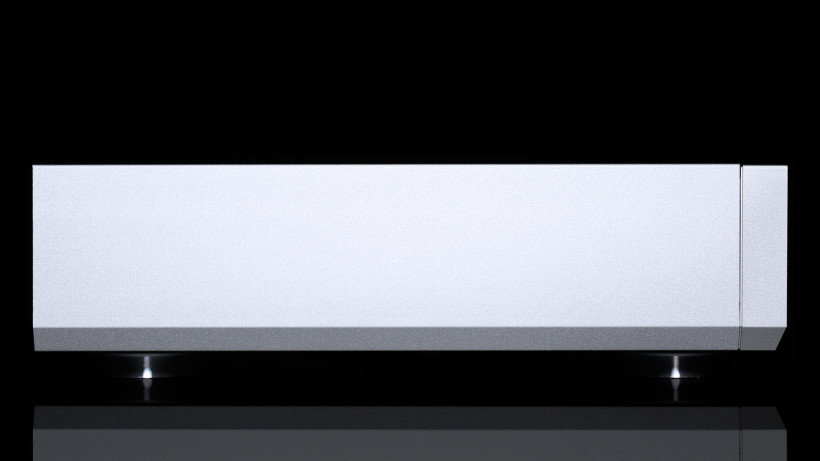 In order to get to H1’s inside, one has to unmount two out of four feet, then deal with six screws in total, visible on its rear and bottom. From this point onwards, the procedure is very straight and fatigue-free; remove the front panel, disconnect it from the main PCB, then gently pull this element out of the case and boom, consider described deed as done. Nearly all H1’s circuitry is mounted on one big board. The device is based on a SMPS power supply, hence it’s worldwide operational right off the bat, without any additional trickery on manufacturer’s end. The signal first goes to Cirrus Logic 8416 digital receiver, the next stop is (borrowed from D1 model) proprietary COS Engineering DSP board, which upsamples data to 176.4 or 192 kHz via 32-bit algorithm. Said element is Taiwanese company’s most guarded secret. Past upsampling phase, d/a conversion happens. Single Texas Instruments Burr-Brown PCM1792A silicone handles that, its SRC module is bypassed. In fully balanced D1 model two of these are mounted. Once d/a duty is done, LME49990MA operational amplifiers handle I/V conversion and four LME49600 modules of the same breed take care of headphone-out. One channel is served by two of these; one inverted and one regular. Volume control is done in analogue domain, via eight cascaded stages of resistor ladders and switches.
In order to get to H1’s inside, one has to unmount two out of four feet, then deal with six screws in total, visible on its rear and bottom. From this point onwards, the procedure is very straight and fatigue-free; remove the front panel, disconnect it from the main PCB, then gently pull this element out of the case and boom, consider described deed as done. Nearly all H1’s circuitry is mounted on one big board. The device is based on a SMPS power supply, hence it’s worldwide operational right off the bat, without any additional trickery on manufacturer’s end. The signal first goes to Cirrus Logic 8416 digital receiver, the next stop is (borrowed from D1 model) proprietary COS Engineering DSP board, which upsamples data to 176.4 or 192 kHz via 32-bit algorithm. Said element is Taiwanese company’s most guarded secret. Past upsampling phase, d/a conversion happens. Single Texas Instruments Burr-Brown PCM1792A silicone handles that, its SRC module is bypassed. In fully balanced D1 model two of these are mounted. Once d/a duty is done, LME49990MA operational amplifiers handle I/V conversion and four LME49600 modules of the same breed take care of headphone-out. One channel is served by two of these; one inverted and one regular. Volume control is done in analogue domain, via eight cascaded stages of resistor ladders and switches. To summarize, lots of op-amps, SMPS based PSU and ΣΔ DAC are the reasons behind why H1 will be discarded by many individuals right away. These days lots of people avoid circuitry that’s not discrete all the way, R-2R based or chipless and with linear PSU of enormous size, before giving it a proper go. As Srajan wrote in his H1 review, the implementation is what counts the most and after hearing many different products over the years, I can only agree. Besides, COS Engineering D1 turned out to be a great performer, hence instead of bashing said Taiwanese manufacture for non-kosher solutions in quite affordable product, it’s much wiser to pay attention to what it does and how. To do so, one has to actually listen to a device and then be vocal about it, not earlier. That’s my take on the case and that’s the exact road we’re heading in this review. PCM1792 DAC and LME49600 combination happened before, i.e. in PAW Gold DAP by Lotoo brand. Yes, in a DAP. Digital Audio Player, a.k.a. portable bugger. But this doesn’t mean that the outcome with H1 will be the same exactly, does it? Or even similar? To assume that that’s how things work in audio is simply unwise. Again, a great cook can fancy a grand meal with very common ingredients. In H1’s case this translates to implementation importance above all else.
To summarize, lots of op-amps, SMPS based PSU and ΣΔ DAC are the reasons behind why H1 will be discarded by many individuals right away. These days lots of people avoid circuitry that’s not discrete all the way, R-2R based or chipless and with linear PSU of enormous size, before giving it a proper go. As Srajan wrote in his H1 review, the implementation is what counts the most and after hearing many different products over the years, I can only agree. Besides, COS Engineering D1 turned out to be a great performer, hence instead of bashing said Taiwanese manufacture for non-kosher solutions in quite affordable product, it’s much wiser to pay attention to what it does and how. To do so, one has to actually listen to a device and then be vocal about it, not earlier. That’s my take on the case and that’s the exact road we’re heading in this review. PCM1792 DAC and LME49600 combination happened before, i.e. in PAW Gold DAP by Lotoo brand. Yes, in a DAP. Digital Audio Player, a.k.a. portable bugger. But this doesn’t mean that the outcome with H1 will be the same exactly, does it? Or even similar? To assume that that’s how things work in audio is simply unwise. Again, a great cook can fancy a grand meal with very common ingredients. In H1’s case this translates to implementation importance above all else. Several words about H1 handling are in order now. D1 has left yours truly with a very positive impressions in this regard. Therefore completely stress-free operation was expected after COS Engineering’s latest portfolio addition. In short, the device works flawlessly. USB 1.0 input makes it completely driverless in Windows, USB 2.0 will remain that way only in MAC environment. On top of that, discussed machine will be seen in OS as COS H1. Proper name of this sort makes things sweet when one uses many DACs that exploit the same USB receivers, i.e. Amanero. At times it can be somewhat confusing in such circumstances. Moving on, user just pops an on/off switch on this machine’s back, pushes volume knob in order to use desired digital input and presto, the sound should be the audible outcome. But there’s more. OLED display is perfectly readable and endlessly rotating volume knob works like a charm. H1 is a desktop device, hence lack of remote control isn’t an issue. Some people like to know the resolution of currently played track and this information isn’t shown anywhere on product’s screen. Normally it could be seen as a small drawback, yet proprietary algorithm in H1 upsamples everything anyway, so that’s that. And since we’re at it, it’s advised to leave said task to product’s DSP board and play all files in their native form, which means no software upsampling. Lastly, once product’s hardware buffer is on, sound quality improves. But audio and video desynchronization will be noticeable i.e. while watching a movie. The audio stream is stored for one second and then reclocked via <1ps crystal. There’s no other way to handle this task without said side effect and that’s perfectly understandable.
Several words about H1 handling are in order now. D1 has left yours truly with a very positive impressions in this regard. Therefore completely stress-free operation was expected after COS Engineering’s latest portfolio addition. In short, the device works flawlessly. USB 1.0 input makes it completely driverless in Windows, USB 2.0 will remain that way only in MAC environment. On top of that, discussed machine will be seen in OS as COS H1. Proper name of this sort makes things sweet when one uses many DACs that exploit the same USB receivers, i.e. Amanero. At times it can be somewhat confusing in such circumstances. Moving on, user just pops an on/off switch on this machine’s back, pushes volume knob in order to use desired digital input and presto, the sound should be the audible outcome. But there’s more. OLED display is perfectly readable and endlessly rotating volume knob works like a charm. H1 is a desktop device, hence lack of remote control isn’t an issue. Some people like to know the resolution of currently played track and this information isn’t shown anywhere on product’s screen. Normally it could be seen as a small drawback, yet proprietary algorithm in H1 upsamples everything anyway, so that’s that. And since we’re at it, it’s advised to leave said task to product’s DSP board and play all files in their native form, which means no software upsampling. Lastly, once product’s hardware buffer is on, sound quality improves. But audio and video desynchronization will be noticeable i.e. while watching a movie. The audio stream is stored for one second and then reclocked via <1ps crystal. There’s no other way to handle this task without said side effect and that’s perfectly understandable.
Sound
COS Engineering D1 is a very impressively sounding machine. Its key feature is exceptionally clean presentation and dark background, which leads to elevated resolution in the process. But every detail in music is served in completely fatigue-free and slightly laid-back fashion. Lots of informations are delivered, yet with humane and not clinical, overly bright, sharp and tiresome approach. The character of said Taiwanese deck is very well-balanced overall and every sound aspect is, dare I say, mature. D1 isn’t a performer which will instantly reveal its true nature, it grows slowly on a listener, to a point where everything is in the right place and amount. LampizatOr Level7 turned out to be more spectacular, mainly because of its more direct attitude, whereas Reimyo DAP-999EX among its Japanese family brought even more musical approach to the table. But D1 was the most versatile in that group. In its case I wasn’t able to pinpoint one thing which could have been done differently as all aspects nicely fit one to another. These make sense. And H1? It has several of D1 virtues, which is very good. Yet there are things this deck handles differently.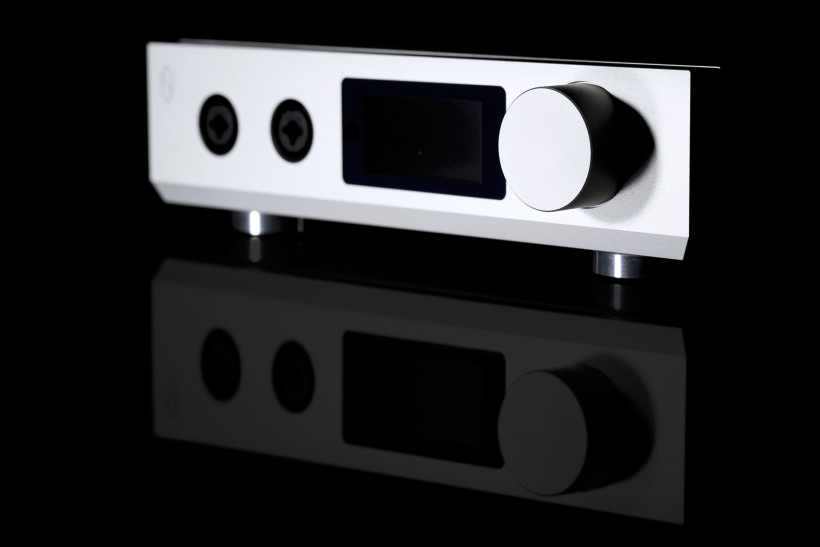 COS Engineering latest product doesn’t have its predecessor’s completely non-showy attitude. Bluntly speaking, it isn’t as calm as D1, on the contrary in fact. But in a headphone world, this often is an advantage. To be more specific, H1 sings in a very authoritative way, it punches hard which this translates to firm control downstairs. Any sign of laziness isn’t a part of the show and it might somewhat indicate that our deck’s bass response is the most prominent part of FR. Nope, that’s not the case this time. In terms of tonal balance, H1 is even all across the board. And density wise, it doesn’t fit in neither thick frame, nor overly slim and lit up on the very top. Said characteristic, when combined with clean and grain-free nature this machine inherited after D1, directs user’s attention towards the complete and precise picture instead of shifting his focus on a certain part of it. The obvious outcome is that H1 sounds complete. On top of that, it boosts headphones’ speed, but usually lets these to do the job without any additional trickery.
COS Engineering latest product doesn’t have its predecessor’s completely non-showy attitude. Bluntly speaking, it isn’t as calm as D1, on the contrary in fact. But in a headphone world, this often is an advantage. To be more specific, H1 sings in a very authoritative way, it punches hard which this translates to firm control downstairs. Any sign of laziness isn’t a part of the show and it might somewhat indicate that our deck’s bass response is the most prominent part of FR. Nope, that’s not the case this time. In terms of tonal balance, H1 is even all across the board. And density wise, it doesn’t fit in neither thick frame, nor overly slim and lit up on the very top. Said characteristic, when combined with clean and grain-free nature this machine inherited after D1, directs user’s attention towards the complete and precise picture instead of shifting his focus on a certain part of it. The obvious outcome is that H1 sounds complete. On top of that, it boosts headphones’ speed, but usually lets these to do the job without any additional trickery.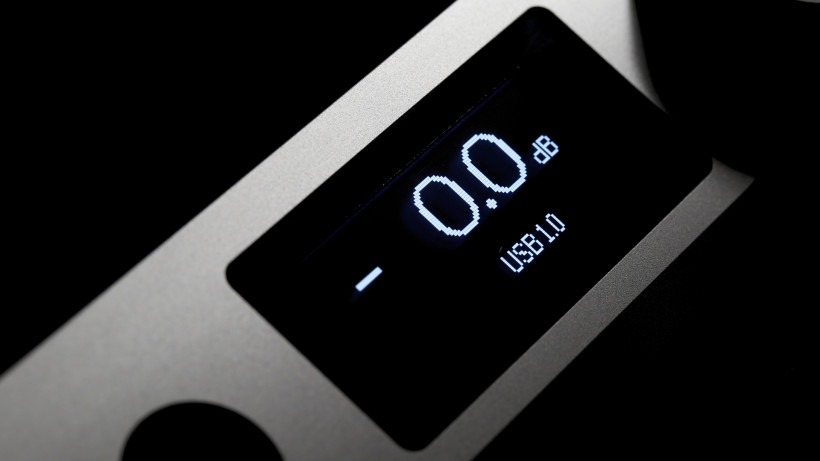 Let’s get back to bass and authority for a second. H1 has strong grip over this frequency part, yet it doesn’t make it excessively thick, midbass isn’t elevated as well. What’s left, then? Springy, energetic, well-textured and, above all else, present low end. The sensation of lows being here in a peculiar way is the key description here. H1 represents just one, though rather unique way of showing nether realm, yet refined and remarkable as a package. Especially after taking into consideration that usually products of its sort tend to make the outcome more full and less agile. This review’s main dish doesn’t perform in sleepy league, not at all. It has the ability to invigorate thick and slow headphones, yet without touching tonal balance or sucking too much out of muscle tissue. Some body loss might happen, yes. But not always it’ll be a drawback, we’ll get back to that in a second.
Let’s get back to bass and authority for a second. H1 has strong grip over this frequency part, yet it doesn’t make it excessively thick, midbass isn’t elevated as well. What’s left, then? Springy, energetic, well-textured and, above all else, present low end. The sensation of lows being here in a peculiar way is the key description here. H1 represents just one, though rather unique way of showing nether realm, yet refined and remarkable as a package. Especially after taking into consideration that usually products of its sort tend to make the outcome more full and less agile. This review’s main dish doesn’t perform in sleepy league, not at all. It has the ability to invigorate thick and slow headphones, yet without touching tonal balance or sucking too much out of muscle tissue. Some body loss might happen, yes. But not always it’ll be a drawback, we’ll get back to that in a second.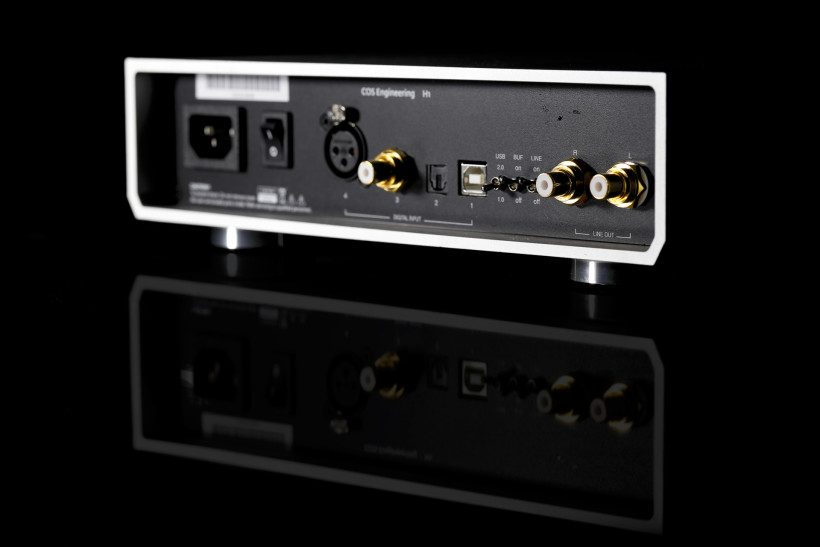 To describe our feisty deck’s case in even more understandable way, picture a heavyweight lifting competition. The very first contestant lifts a barbell as impressively overgrown as he is. He struggles, sweats, screams and eventually is able to handle the task in the end. And there’s the other guy, his frame is half the size of the previous one. He has a bit less on his bar, that’s true, yet he lifts it like it was nothing. Not a drop of sweat on his forehead or any other signs of weariness, nada. Now pick which sight you’d be more impressed with. To reveal what’s what, H1 heavyweight handling process is described in the latter scenario. In my book, this is the real heavy hitter out of aforementioned two. Sleek, fast, swift, yet obviously powerful, capable of showing its strength in an effortless fashion and that’s this paragraph’s main takeaway.
To describe our feisty deck’s case in even more understandable way, picture a heavyweight lifting competition. The very first contestant lifts a barbell as impressively overgrown as he is. He struggles, sweats, screams and eventually is able to handle the task in the end. And there’s the other guy, his frame is half the size of the previous one. He has a bit less on his bar, that’s true, yet he lifts it like it was nothing. Not a drop of sweat on his forehead or any other signs of weariness, nada. Now pick which sight you’d be more impressed with. To reveal what’s what, H1 heavyweight handling process is described in the latter scenario. In my book, this is the real heavy hitter out of aforementioned two. Sleek, fast, swift, yet obviously powerful, capable of showing its strength in an effortless fashion and that’s this paragraph’s main takeaway.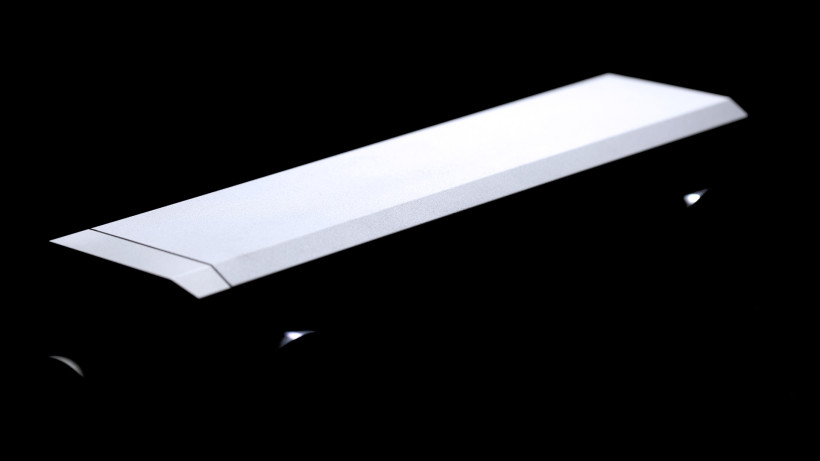 Now, when we established that H1 will make lazy and clunky cans go faster and at times somewhat slimmer, the question about obviously synergistic companions is in order. Picture majority of Audeze camp, old but gold Sennheisers HD600, HiFiMAN Edition X and alike. These are the examples where bass suppler than usual isn’t a drawback and the same story goes with additional speed injection. Our list is far from complete, though. Surely not slow ENIGMAcoustic Dharma D1000 fits H1 and not overly nether-oriented HiFiMAN HE-1000 flagship enjoys this deck’s company even more. Why so? Well, Taiwanese integrated brings out the best in the latter. Recently reviewed iFi Audio PRO iCAN aside, yours truly haven’t heard said planars’ performance packed with more punch and resolve thus far. The overall HE-1000 characteristic is preserved, but the devil sits in details. The outcome was slightly gutsier and obviously faster than usual. But not to a point where aforementioned cans’ laid-back tint was completely gone. It was still there, yet the picture as a whole became clearer and more precise than with Xonar Essence III used by yours truly on a daily basis.
Now, when we established that H1 will make lazy and clunky cans go faster and at times somewhat slimmer, the question about obviously synergistic companions is in order. Picture majority of Audeze camp, old but gold Sennheisers HD600, HiFiMAN Edition X and alike. These are the examples where bass suppler than usual isn’t a drawback and the same story goes with additional speed injection. Our list is far from complete, though. Surely not slow ENIGMAcoustic Dharma D1000 fits H1 and not overly nether-oriented HiFiMAN HE-1000 flagship enjoys this deck’s company even more. Why so? Well, Taiwanese integrated brings out the best in the latter. Recently reviewed iFi Audio PRO iCAN aside, yours truly haven’t heard said planars’ performance packed with more punch and resolve thus far. The overall HE-1000 characteristic is preserved, but the devil sits in details. The outcome was slightly gutsier and obviously faster than usual. But not to a point where aforementioned cans’ laid-back tint was completely gone. It was still there, yet the picture as a whole became clearer and more precise than with Xonar Essence III used by yours truly on a daily basis.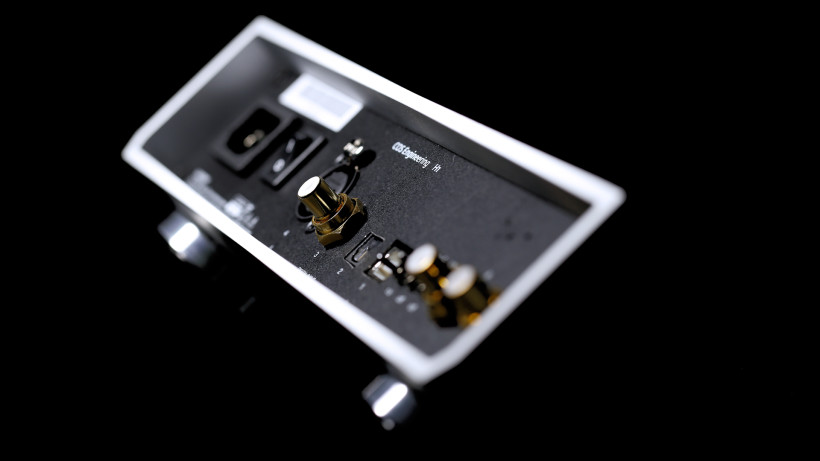 Let’s get back to presence again. This word is in my book a narrative measure which describes to what degree the music is in one room with us instead of much further projection. Let me stress again that H1 amplifies this feature in several ways and very responsive, tight, powerful and well-bodied bass is merely one of them. Once exceptionally well-sketched dynamic contrasts, clarity, candidness and effortlessness are added to the mix, the sensation of music being here and not there is the outcome. This is what HE-1000 matched with H1 sounds like and I’ve found this presentation to be particularly good. In addition, there is no sharpness or excessive stiffness in this deck’s performance and the soundstage it creates is as generous and multi-layered as said headphones allow. That has to count for something. Elevated dynamics aside, H1 is about quality and not quantity yet it doesn’t sound thin. And because this machine is an obvious sprinter, dullness isn’t a part of the package, on the contrary to fun-giving attitude. Plenty of it, I assure you. In the end, the question about things to dislike in aforementioned combination’s outcome was asked and I honestly couldn’t find an answer to it. One €2’500 box, a pair of HE-1000 marvels, a PC/laptop/CD player/whatever and you’re done, go figure.
Let’s get back to presence again. This word is in my book a narrative measure which describes to what degree the music is in one room with us instead of much further projection. Let me stress again that H1 amplifies this feature in several ways and very responsive, tight, powerful and well-bodied bass is merely one of them. Once exceptionally well-sketched dynamic contrasts, clarity, candidness and effortlessness are added to the mix, the sensation of music being here and not there is the outcome. This is what HE-1000 matched with H1 sounds like and I’ve found this presentation to be particularly good. In addition, there is no sharpness or excessive stiffness in this deck’s performance and the soundstage it creates is as generous and multi-layered as said headphones allow. That has to count for something. Elevated dynamics aside, H1 is about quality and not quantity yet it doesn’t sound thin. And because this machine is an obvious sprinter, dullness isn’t a part of the package, on the contrary to fun-giving attitude. Plenty of it, I assure you. In the end, the question about things to dislike in aforementioned combination’s outcome was asked and I honestly couldn’t find an answer to it. One €2’500 box, a pair of HE-1000 marvels, a PC/laptop/CD player/whatever and you’re done, go figure.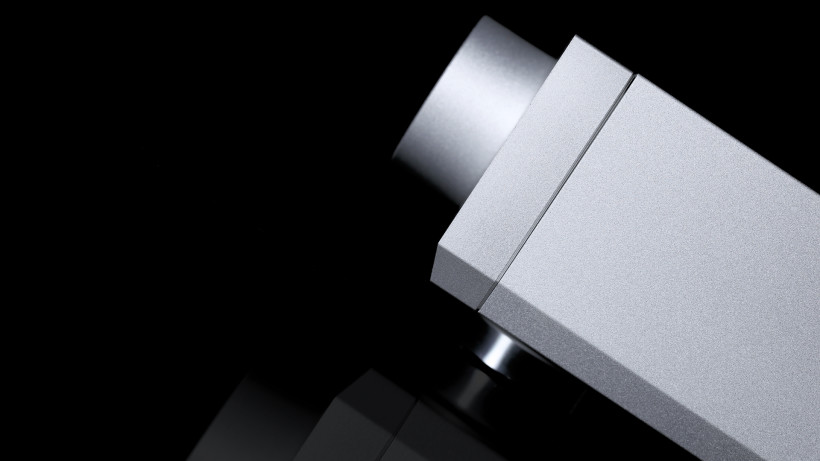 To verify my initial H1 observations, Xonar Essence III comparison had to be done. It made sense from several standpoints. Both machines represent quite similar functionality and what’s on their price tags isn’t that different. The €1’600 versus €2’500 battle was on and I considered it as fairly just. Let us not forget that Xonar’s headphone-out is driven by four LME49600’s and the same amount of OPA2227 op-amps. Fair enough? On paper yes, it appears so. But the practice showed something greatly different. That part about implementation? It honestly matters a lot. Essence III model can go louder, its 12 o’clock versus -20 dB on H1 in order to get the same SPL gives some insight. But the latter punches way harder. The former is fuzzier, more round overall, a bit rough upstairs and heavier down below. A case of apples and oranges then? Two vastly different devices compared and nothing above that? This would be the case if it weren’t for rather large and obvious quality differences. H1 plays it cooler, sleeker, faster and much cleaner. Past switch from this deck to Essence III it’s hard to shake off the feeling that the picture got compressed, blurry and less precise. But what’s important here is that despite being more firm and transparent, H1 isn’t overly stiff or thin in the end. This deck has a humane face still and its bigger, more accurate and present picture in comparison to the rival seals the deal.
To verify my initial H1 observations, Xonar Essence III comparison had to be done. It made sense from several standpoints. Both machines represent quite similar functionality and what’s on their price tags isn’t that different. The €1’600 versus €2’500 battle was on and I considered it as fairly just. Let us not forget that Xonar’s headphone-out is driven by four LME49600’s and the same amount of OPA2227 op-amps. Fair enough? On paper yes, it appears so. But the practice showed something greatly different. That part about implementation? It honestly matters a lot. Essence III model can go louder, its 12 o’clock versus -20 dB on H1 in order to get the same SPL gives some insight. But the latter punches way harder. The former is fuzzier, more round overall, a bit rough upstairs and heavier down below. A case of apples and oranges then? Two vastly different devices compared and nothing above that? This would be the case if it weren’t for rather large and obvious quality differences. H1 plays it cooler, sleeker, faster and much cleaner. Past switch from this deck to Essence III it’s hard to shake off the feeling that the picture got compressed, blurry and less precise. But what’s important here is that despite being more firm and transparent, H1 isn’t overly stiff or thin in the end. This deck has a humane face still and its bigger, more accurate and present picture in comparison to the rival seals the deal.
Summary
When it’s about devices of H1 sort, the market is quite crowded. Many fine rivals of already well-established reputation are for the taking. But even though, there’s a place for this review’s hero as it represents very generous price-performance ratio and sounds unusually fresh.
Now, once H1 model has landed, it’s certain that its long arrival time was worth the wait. This fancy box screams quality, its flawless finish is rewarding indeed. Not one but many manufacturers should learn from COS Engineering team about the fine art of proper i.e. volume knob mounting and assembly overall. It’s safe to say that H1 punches way above its weigh in terms of build quality. Honestly it doesn’t get much better than this, period.
COS Engineering H1 has everything it should have to satisfy the needs of most people. Balanced and unbalanced headphone-outs? Check. Informative display? Check. Regulated/fixed line-out? Check. Multiple digital-ins? Check. Perfect desktop size? Check. Driverless mode? Check. Convenient and issues-free handling? You betcha, H1 simply nails it. Not only it keeps up with its competitors, but also doesn’t suffer from an infancy syndrome. It’s seen, heard and felt that lots of R&D has been put into this deck. But the real icing on our already tasty H1 cake is its sound quality. Dynamics this good, clarity this high and the sense of presence in music this intense not only makes H1 worth the asking of €2’500, but is also quite unique. It’ll surely serve as an efficient remedy for thick and sluggish headphones, that’s a given. Yet the outcome can be great even with cans to which this description doesn’t quite fit. HE-1000 planars? Yes, please!
And lastly, despite being quite new as a brand, COS Engineering is perfectly capable of quality product’s proper execution and market delivery. It’s been proven twice already and with style. Hence merely mild interest in said manufacturer’s actions is no more, now is the time to pay full attention. H1 is here and worth yours. ‘Till next time.
- Headphones: HiFiMAN HE-1000, ENIGMAcoustics Dharma D1000
- Headphone integrated: Xonar Essence III
- USB cable: Forza AudioWorks Copper Twin
- Headphone cables: Forza AudioWorks Noir Hybrid
- Power chords: Forza AudioWorks Noir Concept
- Power delivery: Gigawatt PF-2 mk2
- Equipment racks: Lavardin K-Rak
- Music: NativeDSD
- Playback platform: Roon
Retail prices of reviewed components in EU:
- COS Engineering H1: €2’500 (excl. local VAT rates)
Manufacturer: COS Engineering



